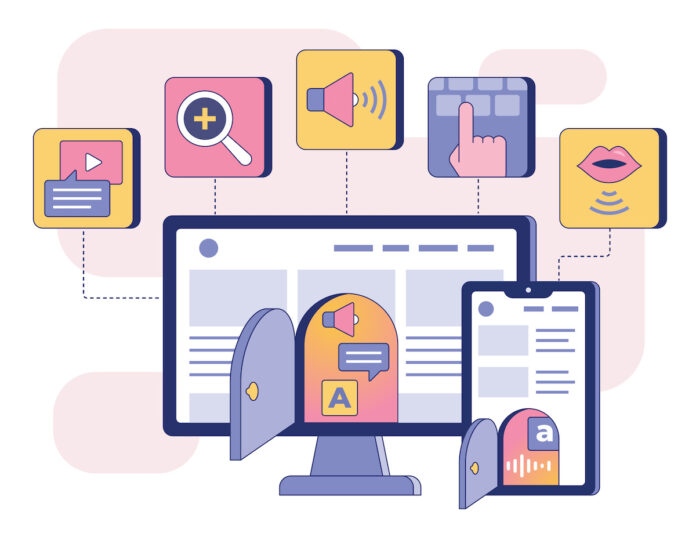With the rise of digital technologies, businesses have increasingly leaned on digital tools to remain competitive. However, a foundational aspect that is often forgotten in this process is digital accessibility. Digital accessibility refers to building technology and interfaces that include people with disabilities or alternative abilities, such as motor illness or blindness. Digital accessibility should not be overlooked in how it can help businesses grow and adapt.
After all, disabled customers make up nearly 10% of the population, and having access to their spending power is incredibly important for any company looking to stay ahead of its competition! This blog post will discuss why investing in accessible solutions isn’t just good practice from an ethical perspective but a practical one that can open up avenues for increased user engagement and revenue gains.
Overview of Digital Accessibility

In an increasingly digital world, ensuring everyone can access and use online resources is more critical than ever. That’s why digital accessibility has become such a hot topic for businesses of all sizes. By designing websites, apps, and other digital content that is accessible to all users, companies can not only comply with legal requirements but also improve their customer engagement and build loyalty.
This means ensuring that people with disabilities or using assistive technology can easily navigate and use their digital products and providing alternatives for users who may be experiencing issues. In short, digital accessibility isn’t just a legal requirement. It’s good business practice. Not only does it increase customer engagement, but it also opens up the potential for increased revenue gains.
There’s also a moral imperative to ensure that digital products are accessible. Everyone should be able to access the same online resources regardless of their abilities or disabilities, and businesses should strive to provide a similar user experience for all.
This means optimizing digital products for people with disabilities and ensuring that they can effectively be used with assistive technology. It also means highlighting any accessibility features and ensuring everyone knows them so that those who need them can take advantage. This includes providing alt text for images, designing interfaces that are easy to navigate with a keyboard or screen reader, and offering video audio transcripts.
Benefits of Making Websites, Mobile Apps, and Other Digital Products Accessible to Everyone

In today’s fast-paced digital world, accessibility is a necessity. When websites, mobile apps, and other digital products are made accessible to everyone, it doesn’t just benefit those with disabilities, but it benefits everyone. With an accessible website, for example, users can navigate the site more easily and quickly find the information they need.
This can lead to a positive user experience, increased engagement, and even increased sales. Additionally, making these products accessible to everyone shows a company’s commitment to inclusion and diversity, which can build customer trust and loyalty. The potential implications of digital accessibility are vast, and companies can benefit in numerous ways when they prioritize the user experience for everyone. Of course, digital accessibility should be viewed as an ongoing commitment, not a one-time effort.
Another benefit of digital accessibility is the cost savings associated with creating and maintaining an accessible website. Companies may be tempted to invest in costly custom development but should consider more cost-effective solutions.
By taking advantage of standards and guidelines, such as W3C’s Web Content Accessibility Guidelines (WCAG), businesses can ensure their digital resources are accessible and compliant with the law. Furthermore, many companies have begun to adopt automated accessibility testing tools, which can help them quickly and easily check their digital products for accessibility issues.
How to Make Sure a Website Is Designed for All Users
In today’s digital age, having a website accessible to all users is more important than ever. Websites must be designed to be inclusive to individuals with disabilities. Some practical steps to ensure that your website is accessible include ensuring the website has a clear and straightforward layout, using appropriate color contrast, providing alternative text for all images, and ensuring the website is compatible with assistive technology. By prioritizing the needs of all users, you can create a more welcoming and valuable online experience.
Luckily, sites like top5accessibility.com offer reviews of different accessibility tools that businesses can implement to ensure their websites, products, and other digital content is accessible to everyone. This allows businesses to quickly find the right tools they need and apply them quickly. Your website is the outward-facing representation of your business, so it is essential to ensure that all visitors feel welcome and can access the information they need.
Examples of Companies That Have Made Their Products and Services More Accessible

In recent years, there has been a growing trend of companies making their products and services more accessible to a broader audience. One great example is Microsoft, which has invested heavily in accessibility features for its software products. Microsoft has enabled millions of people with visual impairments to use their products easily by including features such as built-in screen readers and high-contrast modes.
Another company making strides in accessibility is Uber, which has developed an app specifically tailored to users with hearing and visual impairments. With features like flashing lights and haptic feedback, Uber has enabled anyone to navigate their transportation services.
Another example of a company that has made its products and services more accessible is the popular fitness tracking app Strava. The app has implemented audio cues for users with vision impairments, allowing them to listen to their progress instead of looking at the screen. That way, Strava can help users of any ability reach their fitness goals.
Conclusion
Digital accessibility is an essential tool that businesses of all sizes should prioritize. By making their websites, apps, and other digital content accessible to everyone, companies can comply with legal requirements, improve customer engagement, and build loyalty.
By investing in accessibility, businesses can open the potential for increased user engagement, revenue gains, and overall customer satisfaction. It is essential to remember that digital accessibility should be viewed as an ongoing commitment, not a one-time effort. With the right resources and tools, businesses can make their products and services more accessible to anyone who uses them.







